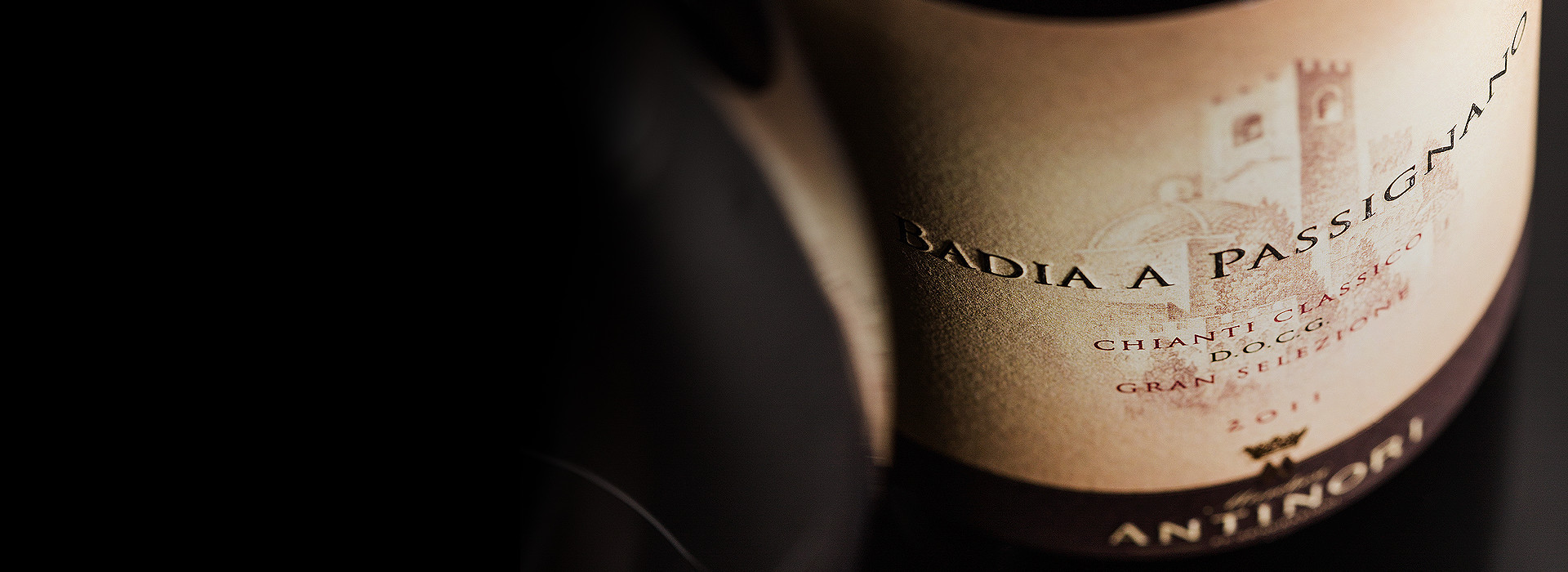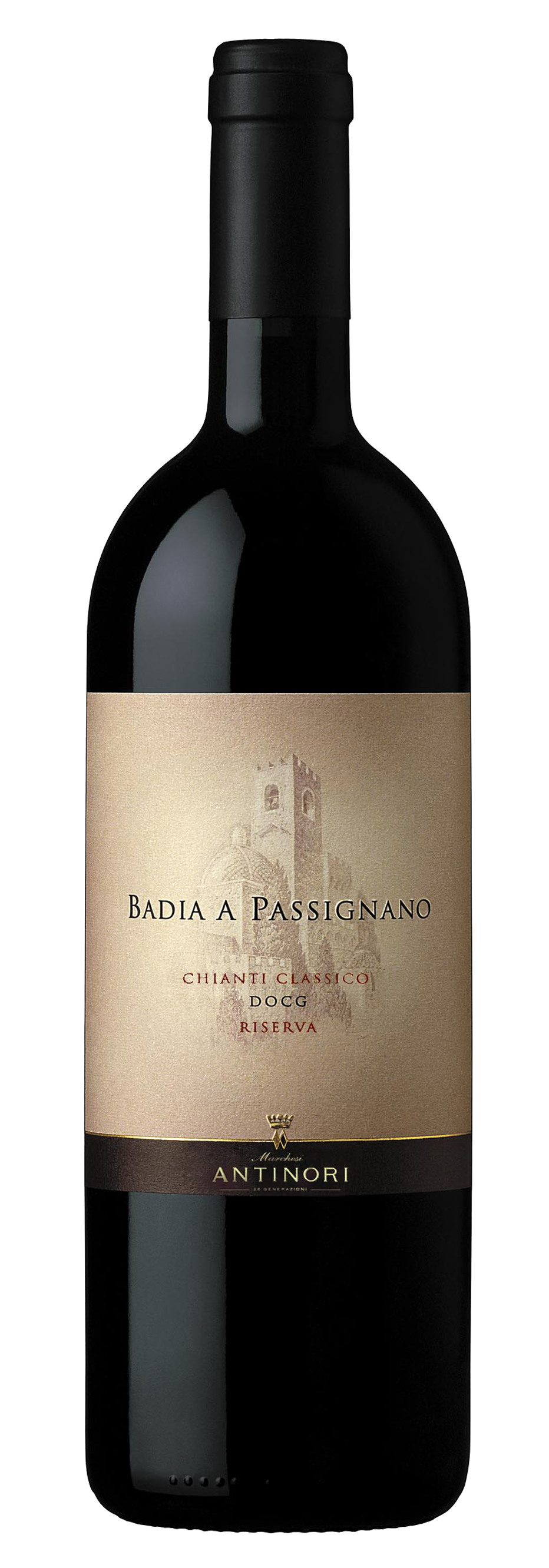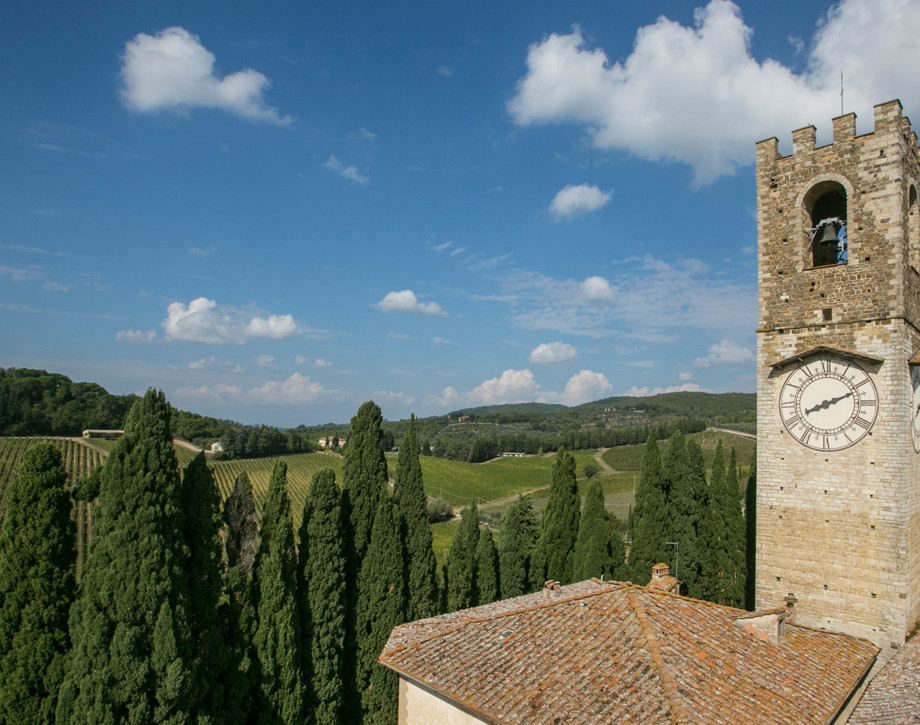Badia a Passignano

Climate
The growing season was marked by a particularly dry and mild winter which led to a very early bud break and accelerated subsequent phases of plant development. The early part of summer was rather warm, but was followed by a relatively cool month of August which favored regular vegetative growth. The harvest began slightly earlier than usual compared to seasonal norms. September and October were characterized by warm and sunny weather and cool nights, a weather pattern which guaranteed the type of daytime to nighttime temperature swings which are essential to the achievement of quality Sangiovese grapes. From the very start, it was obvious that the level of the grapes and the must was very high indeed - in addition to intense colors and aromas, the varietal character was very much in evidence. Harvest operations were in no way influenced by the climate, and this assisted a careful and rigorous choice of picking dates; the Sangiovese grapes were picked during the last ten days of September and the first part of the month of October.
Vinification
The favorable conditions of the growing season and, above all, the exceptional quality of the grapes permitted picking to be carried out in an entirely selective way, parcel by parcel, on the basis of the ripeness level of the various sections of the vineyard. The grapes were picked by hand in order to insure a careful selection of the finest bunches, an operation which was assisted by the extremely healthy condition of the crop. After destemming and a soft pressing, of fundamental importance for maintaining the varietal character and aromas of Sangiovese, the must and skins went into stainless steel tanks for the fermentation and maceration on the skins. The musts macerated with the assistance of pumping over of the cap of skins in the tanks and by delestages (rack and return) of the tanks in order to insure a thorough extraction. But one which preserved, at the same time, sweetness and elegance in the tannins. From the very start of fermentation, the musts showed rich colors, a physiological patrimony of a months of September during which warm and sunny days were followed by cool, or even cold, nights. Fermentation lasted a week’s time and was followed by a further two week period of skin contact. After the wine was run off its skins, it went immediately into small oak barrels, Hungarian and - in part - French, where it went through a complete malolactic fermentation by the end of the year. The wine was racked and then cellared in separate lots on the basis of the vineyard source. Aging took place in 60 and 80 gallon barrels, some of Hungarian oak and others of French oak, and the aging period lasted approximately fourteen months. During this lengthy period, the various lots were regularly observed, analyzed, and tasted in order to insure maximum quality during the aging process, and were then blended together at the end of the aging period. The wine, was then bottled at the estate and given a further twelve months of aging before commercial release.
Historical data
Badia a Passignano Gran Selezione is produced exclusively from the finest Sangiovese grapes harvested from its namesake vineyard located in the heart of the Chianti Classico region. The region has been respected and appreciated for its outstanding wine production since the year 1000. The vineyards grow at an altitude of approximately 300 meters (984 feet) above sea level on soils rich in limestone with a fair amount of clay. The wine is aged in the historic cellars under the Badia (abbey) of Passignano that dates back to the 10th century.
Tasting Notes
A wine of important impact, an intense ruby red in color. The aromas are complex with notes of red fruit, raspberries, blueberries, and ripe cherries and a spicy, liquorice-laden finish. On the palate it is ripe and sweet, endowed with an important structure of sweet and enveloping tannins and ample and velvetyin texture. Long on the palate and with a vibrant, tonic acidity, it is an exceptional expression of the Sangiovese grape in this part of the Chianti Classico appellation.

The Wine
Badia a Passignano Gran Selezione is produced exclusively from the finest Sangiovese grapes harvested from its namesake vineyard located in the heart of the Chianti Classico region. The region has been respected and appreciated for its outstanding wine production since the year 1000. The vineyards grow at an altitude of approximately 300 meters (984 feet) above sea level on soils rich in limestone with a fair amount of clay. The wine is aged in the historic cellars under the Badia (abbey) of Passignano that dates back to the 10th century.

Climate
The growing season was marked by a particularly dry and mild winter which led to a very early bud break and accelerated subsequent phases of plant development. The early part of summer was rather warm, but was followed by a relatively cool month of August which favored regular vegetative growth. The harvest began slightly earlier than usual compared to seasonal norms. September and October were characterized by warm and sunny weather and cool nights, a weather pattern which guaranteed the type of daytime to nighttime temperature swings which are essential to the achievement of quality Sangiovese grapes. From the very start, it was obvious that the level of the grapes and the must was very high indeed - in addition to intense colors and aromas, the varietal character was very much in evidence. Harvest operations were in no way influenced by the climate, and this assisted a careful and rigorous choice of picking dates; the Sangiovese grapes were picked during the last ten days of September and the first part of the month of October.
Vinification
The favorable conditions of the growing season and, above all, the exceptional quality of the grapes permitted picking to be carried out in an entirely selective way, parcel by parcel, on the basis of the ripeness level of the various sections of the vineyard. The grapes were picked by hand in order to insure a careful selection of the finest bunches, an operation which was assisted by the extremely healthy condition of the crop. After destemming and a soft pressing, of fundamental importance for maintaining the varietal character and aromas of Sangiovese, the must and skins went into stainless steel tanks for the fermentation and maceration on the skins. The musts macerated with the assistance of pumping over of the cap of skins in the tanks and by delestages (rack and return) of the tanks in order to insure a thorough extraction. But one which preserved, at the same time, sweetness and elegance in the tannins. From the very start of fermentation, the musts showed rich colors, a physiological patrimony of a months of September during which warm and sunny days were followed by cool, or even cold, nights. Fermentation lasted a week’s time and was followed by a further two week period of skin contact. After the wine was run off its skins, it went immediately into small oak barrels, Hungarian and - in part - French, where it went through a complete malolactic fermentation by the end of the year. The wine was racked and then cellared in separate lots on the basis of the vineyard source. Aging took place in 60 and 80 gallon barrels, some of Hungarian oak and others of French oak, and the aging period lasted approximately fourteen months. During this lengthy period, the various lots were regularly observed, analyzed, and tasted in order to insure maximum quality during the aging process, and were then blended together at the end of the aging period. The wine, was then bottled at the estate and given a further twelve months of aging before commercial release.
Historical data
Badia a Passignano Gran Selezione is produced exclusively from the finest Sangiovese grapes harvested from its namesake vineyard located in the heart of the Chianti Classico region. The region has been respected and appreciated for its outstanding wine production since the year 1000. The vineyards grow at an altitude of approximately 300 meters (984 feet) above sea level on soils rich in limestone with a fair amount of clay. The wine is aged in the historic cellars under the Badia (abbey) of Passignano that dates back to the 10th century.
Tasting Notes
A wine of important impact, an intense ruby red in color. The aromas are complex with notes of red fruit, raspberries, blueberries, and ripe cherries and a spicy, liquorice-laden finish. On the palate it is ripe and sweet, endowed with an important structure of sweet and enveloping tannins and ample and velvetyin texture. Long on the palate and with a vibrant, tonic acidity, it is an exceptional expression of the Sangiovese grape in this part of the Chianti Classico appellation.

Badia a Passignano
Badia a Passignano is located above the town of Sambuca Val di Pesa, just 3 kilometers south of the Tenuta Tignanello estate. The property extends over an area of 223 hectares (551 acres), of which 65 hectares (160 acres) are planted with vines. The vineyards grow at an altitude that varies between 250 meters (820 feet) and 300 meters (984 feet) above seal level on calcareous soil in one of the most naturally endowed and beautiful environments in the Chianti Classico region. The estate’s historical importance in the Chianti region is well documented in hundreds of volumes that are kept in the Florence State Archives that provide descriptions and details about the Sangiovese vineyards and local crops over the centuries. Further proof of this came to light in 1983 when a thousand year old vitis vinifera plant was discovered on the land surrounding Badia a Passignano.

Soil
Predominantly calcareous
















